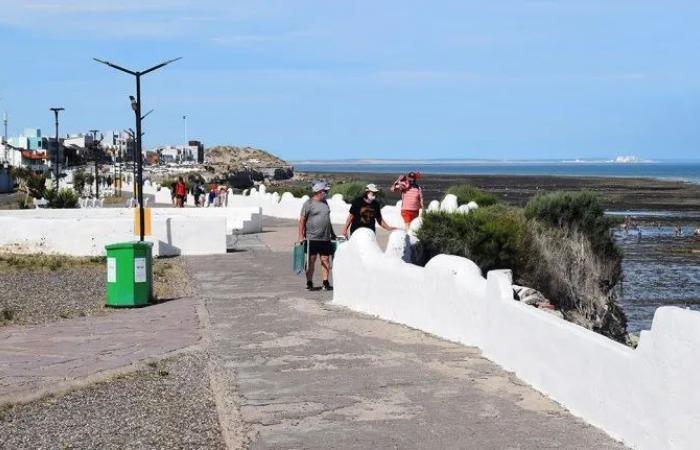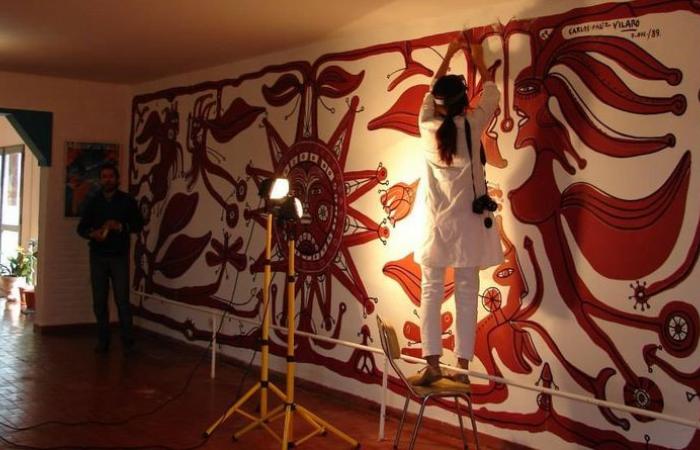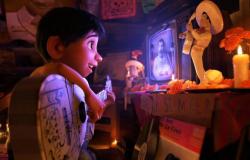“He had a great social sense and humanity of Carlos, beyond being who he was, he always distinguished him. For that reason we set ourselves a riskier adventure since the distances in Argentina are immense and it was the lei motiv of the painter of the“ medium of the river ”. His work is marked by the two shores, most of his de facto works have been conceived in Tiger. Córdoba, province of Buenos Aires … In May we made a stand by and now we resumed, ”he deepened details.
He said that the tour that will begin in gold will then continue through the mountain range and the rest of the Patagonia and threw a stick to Neuquén. “The initial conversations were with the Museum of Fine Arts of Neuquén, the efforts were advanced but suddenly they disregarded the subject. There is no evil that for good does not come and luckily they picked up the glove both in gold and other cordilleran cities,” he rescued.
“In gold it will be done in a wonderful, emblematic place, from great local and municipal management and businessmen in the area,” added the producer, who indicated that the paintings “will be with custody and the sale” although it did not ventilate figures.
Inspired the white wall of the caves
At the end of the 80s, Carlos Páez Vilaró arrived at Las Grutas, the Rionegrino spa that walked to become the great tourist center it is, and was delighted with the natural beauties he found.
The testimonies say that he reminded the landscape of Casa Pueblo, the emblematic building located in Punta Ballenas, in the vicinity of Punta del Este, where he spent and worked in his atelier.
His presence did not go unnoticed, because he also left his brand by having promoted, as in that place in Uruguay, the Mediterranean style forms that can be seen today in the bleached walls of the Costanera, in the descent to the beach, the Parador of the Rinconada and the occasional private property.
image.png

These architectural details, which characterize the Balnearia Villa, in 2020 acquired relevance when sanctioning the Deliberative Council of San Antonio, an ordinance that declared a municipal cultural heritage to the coastal mural that extends from the Terraza neighborhood to the sea to the seventh descent. Little more than 3,300 meters.
But in addition the artist presented to the community two murals with his particular style. One is at the Antoine airfield of Saint-Exupéry and the other in the municipal delegation.
Páez Vilaró Lg.jpg wall

This last work has the peculiarity that as originally painted in the previous communal building located on the waterfront and demolished to build the complex of a guild that oil that bought the land- they split the piece of wall where he had drawn it and transferred it to the new building, where he is exposed to the public.
In 2014, members of the National Directorate of Argentine Patrimonies and Museums carried out restoration work of both murals.
A review on Crlos Páez Vilaró
Carlos Páez Vilaró was born in Montevideo, Uruguay, on November 1, 1923. Due to his strong artistic vocation he left in his youth to Buenos Aires, where he was linked to the media of the graphic arts, as a printed apprentice in Barracas and Avellaneda.
He returned to Uruguay, in the 40s. Motivated by the theme of Candombe and the Afro-Oriental Comparsa and was closely linked to the life of the “Media-Mundum” convent, he entered fully to manifest himself in the field of art.
Páez Vilaró was totally delivered to the theme, he painted dozens of cartons, composed candombs for the lubolas comparsas, directed his choirs, decorated his drums or encouraged a folklore that at that time struggled to impose himself against misunderstanding.
He met Picasso, Dalí, De Chirico and Calder in his workshops and lived with Dr. Albert Schweitzer in the Lambaréné leprosario. Páez Vilaró, integrating the French expedition “Dahlia”, managed to perform in Africa, the film “Batouk”.
In its vast tra[1]Yectoria of accomplishments and despite the trips and changes experienced in his painting during the half century of action, the artist solidly retained his loyalty to the Afro-Uruguayan theme.
The “Media -Mundican” convent, starting point of his work, was demolished and with him, his very delicious record. Páez Vilaró, finally based in Punta Ballena, Uruguay, had his workshop in the older dome[1]Pueblo, their “habitable sculpture”, modeled with their own hands, on the cliffs who look at the sea in Punta Ballena.








